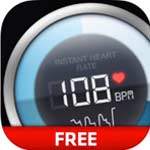
I never liked the idea of yoga because generally it is portrayed as something that only skinny, hyper flexible vegetarian hippies do. Many yogis seem to be showing off their crazy acrobatic poses on social media, which didn’t help, make it more attractive. To me, yoga is not about being able to perform fancy extreme postures, but to be able to find peace and comfort in doable postures that may not be comfortable when you first try them, all you need is your body and the willingness to explore it exactly how it is in that moment. If something improves over time, great, having practiced mindfully you will notice it and with that can celebrate your achievement.
Continue reading

Following on from my last post on SAD (seasonal affective disorder) self-help, looking at how to utilise light therapy as a method for dealing with winter depression, here is my guide on choosing and using light therapy for winter depression. Winter depression can be quite debilitating and frustrating but it doesn’t have to be like that year-in, year-out. Personally, I find the hardest thing about winter to be getting up whilst it is still dark outside, I have been using a sunrise alarm clock since 2006 and I definitely find it makes waking up that little bit easier
Continue reading
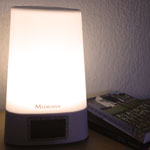
Are you feeling SAD these days? You might be craving light now that the days are getting shorter and darker. For some people the lack of daylight in autumn and winter can lead to seasonal affective disorder (SAD). SAD is a condition that typically causes feelings of lethargy and sadness throughout the winter months. Have you noticed a change in your motivation to attend your usual activities such as Yoga class or going to the gym? Maybe you feel less centred, you get irritable more easily and you feel like pulling the blanked back over your eyes when your alarm rings in the morning. Even sweet cravings can be a side effect of feeling the winter blues.
Continue reading
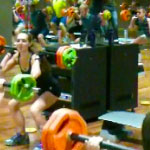
Have you asked yourself or your group fitness instructor “how many times should I go to the gym to lose weight or get stronger”? I often get asked “how many classes do you teach a week?”. I suspect that the idea is to copy the amount of classes I teach in the hope that it will speed up getting stronger or achieving weight loss results. We fitness instructors exercise for a living and doing so is neither health promoting, nor does it help us get in shape; in fact it actually hinders the body from adapting to the work load because we have the same exact routine/ class schedule every week. Often we do not get enough rest and recovery days. Instructors need to take the classes that they can get so we can not plan a nice alternation between a hard days and a easy recovery or mind body days. You as a participant have the opportunity to plan out your own gym schedule from the time table your gym provides. I will explain how I would go about choosing which classes to do on each day of the week and what kind of rules you should bear in mind when doing the planning to get the most out of working out. After all non of us have endless amount of time to spend in the gym or patience to endure not getting results as soon as possible.
Continue reading
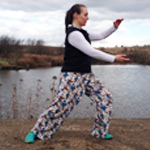
Today I will give a short introduction to the Shibashi sequence I teach and practice. Shibashi is really nice as it is simple and allows everyone, novice or experienced, to practice and relax together. If you thought tai chi has to be serious and martial arts focused think again, this is definitely different, much more in line with a group fitness class such as Yoga. If you have been following me for a while you may have already read the “5 benefits of stress management and reasons to do tai chi before you draw your pension” and “I didn’t like tai chi…”, I think both of these posts are helpful for anyone that is hesitant about incorporating a slow movement practice into their fitness schedule just as much as I was once.
Continue reading
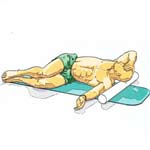
What I like about the Zone exercises is that they integrate mind and body both of which affect each other. Studies have shown that emotional tension is held in different areas of the body depending on what they relate to. Some people carry their tension in their shoulders others in their lower back. Zone related movements can help release and balance tensions a person holds which means you can also affect your posture in a positive way by practicing Zone exercises. You do not have to understand how it works or believe in the approach for it to work. If you prefer to just see this as a gentle exercise routine you will still experience great benefits as you practice with consciousness and awareness of how you body responds to each movement. It is about being in the moment, getting to know your body and listening to how it feels. If you are not ready for traditional still sitting meditation you might find the Zone exercises are a good intermediate step on your way to integration more mindfulness in your life without causing yourself the emotional stress that the thought of still meditation might trigger for you.
Continue reading
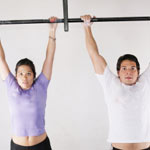
Like many of you, I have over-exercised by running too many miles and instructing unhealthy numbers of exercise classes each week; none of which resolved my body image/ weight issues and largely contributed to my mental and physical ill health. Yes I know, it is commonly prescribed to exercise more and to eat a lot less, but does it work? Does it make you feel good, is it sustainable long term, will it change your body shape permanently? Well – no, generally it does not. There is a limit to what your body can cope with in the long run. If you keep doing several intense classes at the gym or running many miles each week you will eventually experience symptoms of over training see the list
Continue reading

Let’s look at how to compose the perfect snack that does not leave you with an energy low soon after. Every meal and snack must contain, protein, fat and carbohydrates in the ratios that work best for your metabolic type….why we need to eat fat, meat and a researched-backed reason why carbs are kind of unnecessary. Do you know if you are deficient in any vital nutrients, vitamins or minerals? If you observe your body closely you can quickly learn when you may be missing something. For example it is common for vegetarians to be deficient in Vit B12.
Continue reading

The pre-workout snack does not fuel the workout. Every meal, every day is about fuelling your workouts. It takes many hours to refill your muscle and liver glycogen stores, so until a meal has been processed your body has to rely on existing fat and glycogen reserves to power the workout. If you eat proteins, healthy natural fats and good carbohydrates such as vegetables and some fruits and the occasional white rice or sweet potato you will have plenty of muscle glycogen to fuel your activities. Run your own experiment…
Continue reading
|







